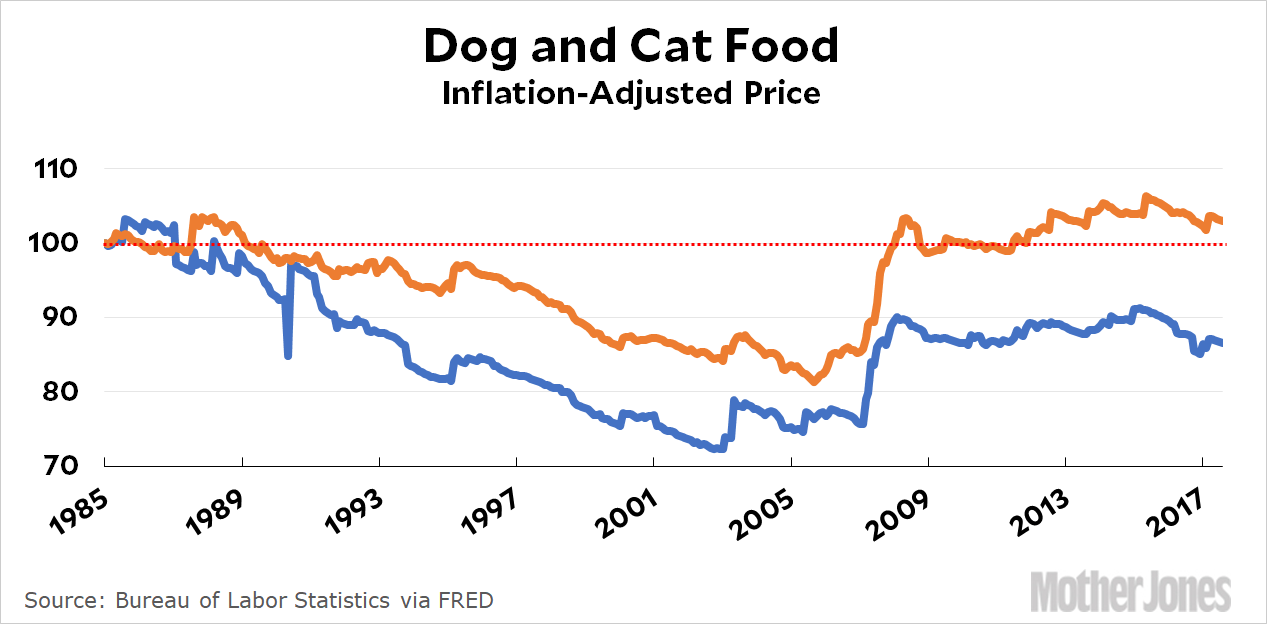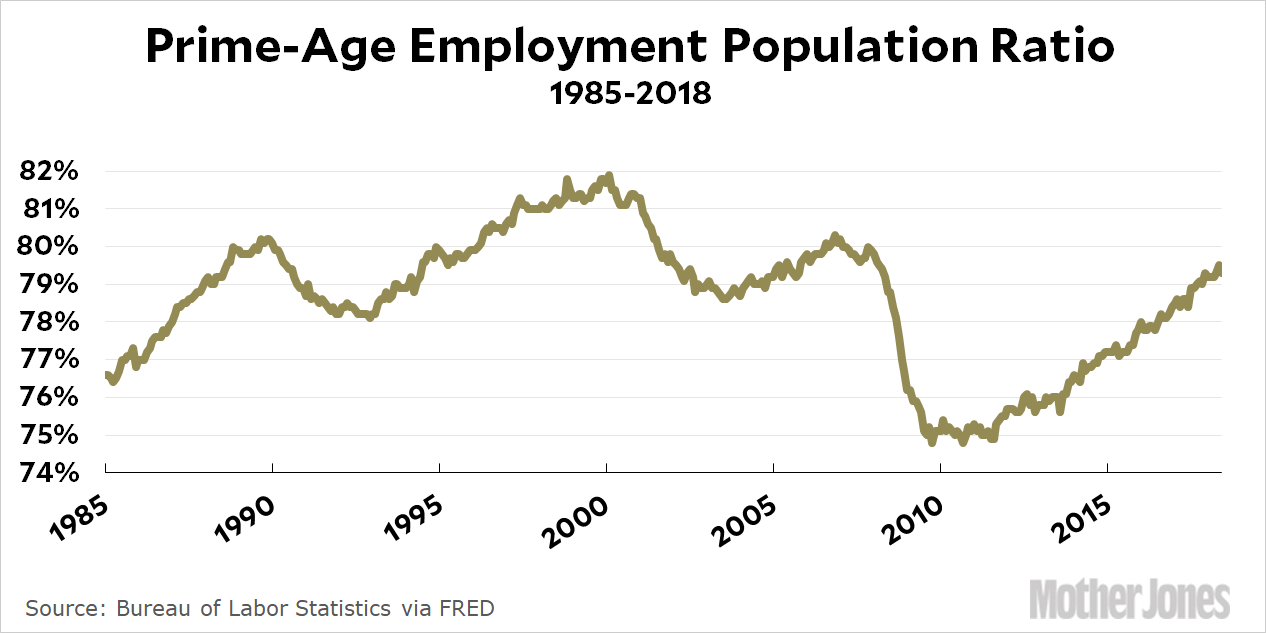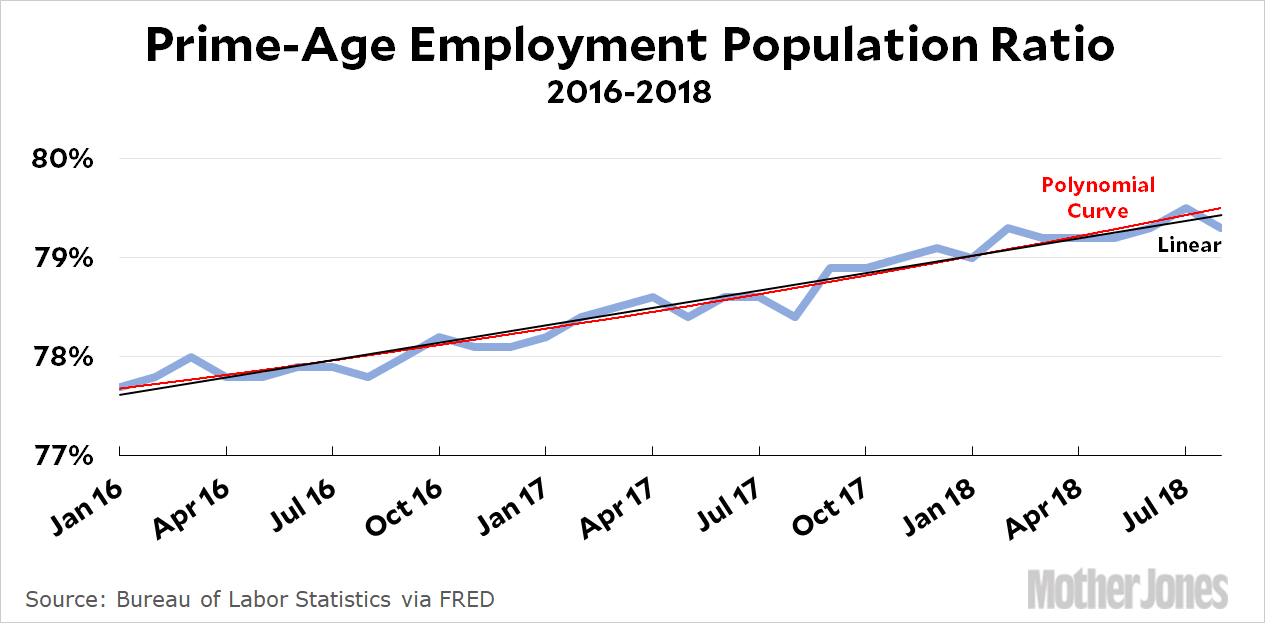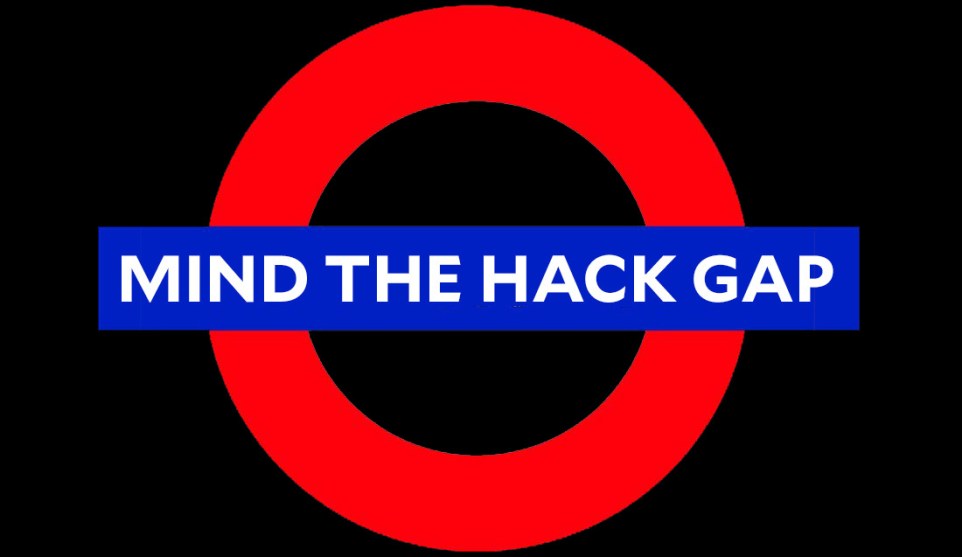We still aren’t close to true artificial intelligence, but fast, accurate machine vision is one of the stepping stones to getting there:
Food manufacturers are combining advances in laser vision with artificial-intelligence software so that automated arms can carry out more-complex tasks, such as slicing chicken cutlets precisely or inspecting toppings on machine-made pizzas. At a sausage factory, more-powerful cameras and quicker processors enable robots to detect the twisted point between two cylindrical wieners fast enough that they can be cut apart at the rate of 200 a minute.
….A high-speed system may have a process time of 10 to 30 milliseconds, or about 100 times as fast as a human, said Bob Hosler, chief operating officer of the U.S. subsidiary of Osaka, Japan-based Keyence Corp. , one of the biggest companies in the vision-products field.
….While vision sensors are good at scanning images for what’s missing, robotic eyes face a wall in inspecting objects from multiple angles, according to engineers at Kyoto, Japan-based Omron Corp. Their proposed solution: big data. To teach a sensor to distinguish a chocolate chip from a burned bit in a cookie, for example, Omrom is using AI to analyze thousands of inspection results. That sort of software will be crucial as robots increasingly permeate the economy.
Personally, I think that distinguishing a chocolate chip from other things that are pretending to be chocolate chips is a key sign of progress. This kind of deceit needs to be rooted out and destroyed with the kind of ruthlessness that only a robot can bring to the job.
More to the point, however, here’s what’s happening to the price of processed meats:
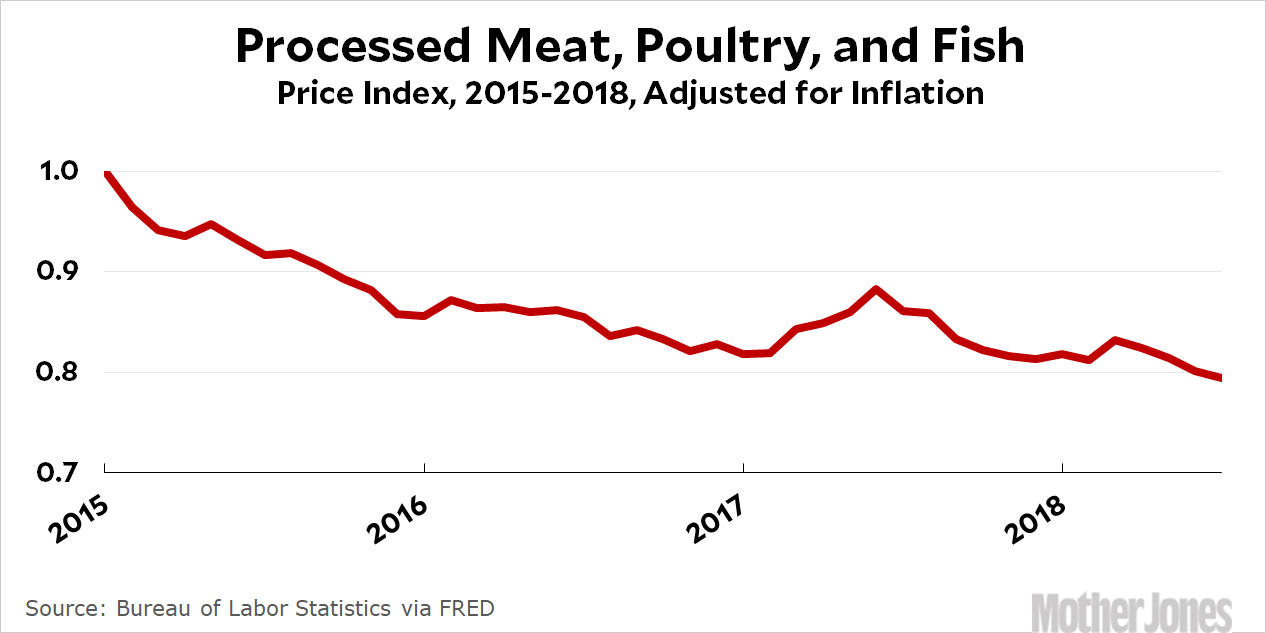
In fairness, most of this decline is just making up for a sudden increase during the Great Recession. Nonetheless, I expect this price trend to continue over the next decade as food processing plants slowly become fully automated, keeping only a tiny shell of humans around to make sure the robots are doing their jobs. This will be great for consumers, but not so great for all the people who currently make their living in food processing plants.


